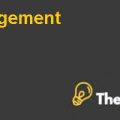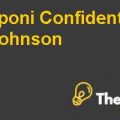
Natural Disasters such as Iceland’s 2010 volcanic eruption and Japanese tsunami in 2011 have enlightened that extended supply chains have vulnerabilities that are quite serious. On the other hand rapid globalization has also increased the threat of occurring disruptions and has made challenging to combat these disruptions.
In order to streamline the process by eliminating non-value added activities, lean supply chain practices are being adopted by many of the firm, has ultimately enhanced the risk factor during disruption due to lack of the buffer capacity.
The primary focus of the companies, while screening the risk factors, are on the supply side of their supply chains but they also need to pay attention to the customer side. Companies avoid the risk of disruptions through Business Continuity Management (BCM) and Enterprise Risk Management (ERM). As many of the risks are unpredictable but the companies still rely heavily on risk identification rather than increasing resilience capabilities.
Experiencing many of the eminent companies including Johnson & Johnson, Unilever, Dow Chemical and fashion retailer L Brands Inc. the authors provide a comprehensive framework, Supply Chain Resilience Assessment and Management (SCRAM), to evaluate the potential risk factors and to mitigate the consequences of such risks. This framework prioritizes the vulnerabilities that make the company susceptible to disruptions through enhanced anticipating and combating skills.












